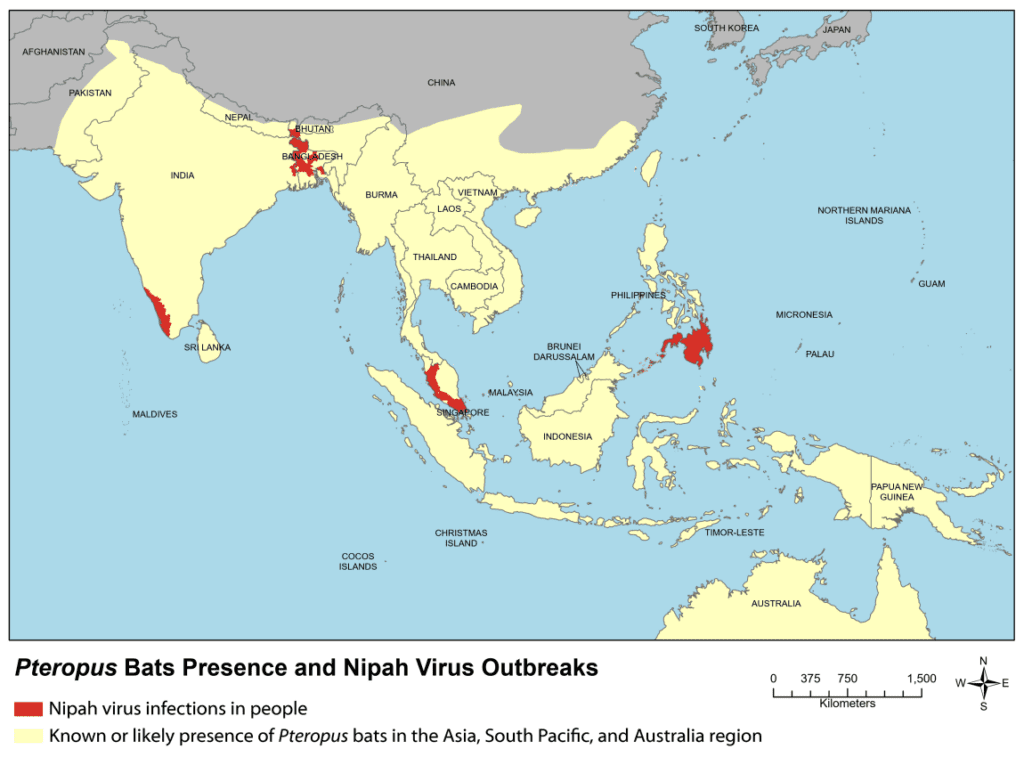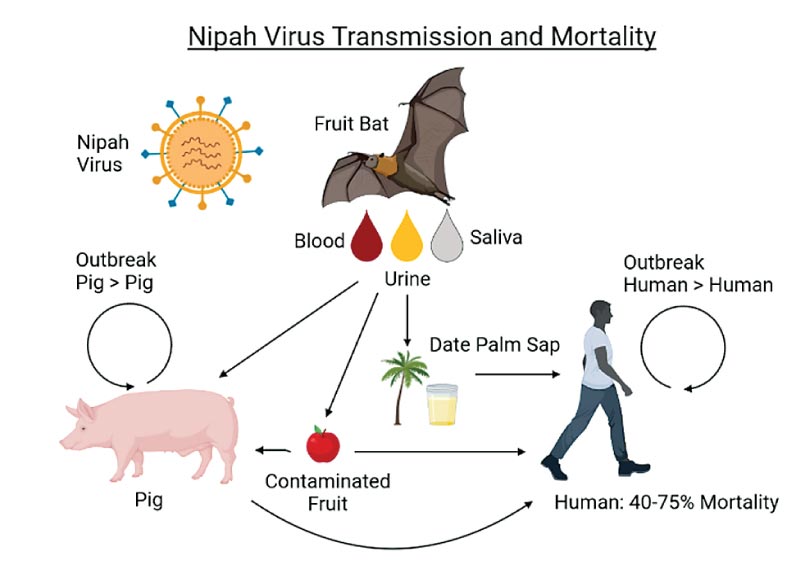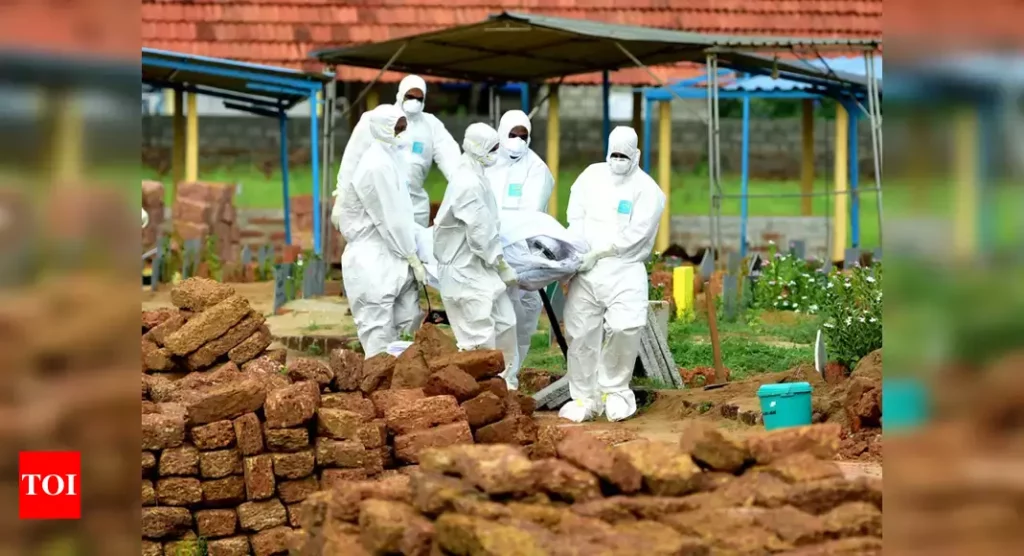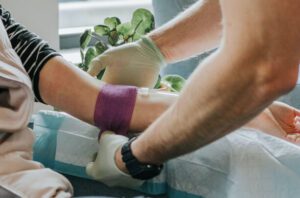What is Nipha Virus?
NiV, belonging to the Henipavirus genus within the Paramyxoviridae family, is a zoonotic virus, initially transmitted between animals and humans. The fruit bat, also known as the flying fox (Pteropus genus), serves as the primary reservoir for NiV. Due to its genetic similarity to Hendra virus, another henipavirus carried by bats, the investigation focused on bat species, particularly flying foxes, which were subsequently identified as the source.
Infected fruit bats can transmit the disease to humans and other animals, such as pigs. Human infection can occur through close contact with an infected animal or its bodily fluids (e.g., saliva or urine). This initial transmission from an animal to a person is termed a “spillover event.” Once the virus reaches humans, it can also spread from person to person.

Outbreak
Start – I
In 1999, Nipah virus (NiV) was initially identified after an outbreak of illness affecting both pigs and humans in Malaysia and Singapore. This particular outbreak led to nearly 300 documented human cases and more than 100 fatalities, causing significant economic repercussions, including the culling of over 1 million pigs to contain the outbreak.
Although no further NiV outbreaks have been reported in Malaysia and Singapore since 1999, subsequent outbreaks have occurred almost annually in various parts of Asia, primarily in Bangladesh and India. Notably, during these outbreaks, the virus exhibited person-to-person transmission, prompting concerns about the potential for NiV to spark a global pandemic.
Evolution -II
On May 19, 2018, an outbreak of Nipah virus disease (NiV) was documented in the Kozhikode district of Kerala, India. This marked the first occurrence of a NiV outbreak in South India, resulting in 17 fatalities and 18 confirmed cases by June 1, 2018. The affected areas were Kozhikode and Malappuram districts. In response to this outbreak, a multi-disciplinary team led by the Indian Government’s National Centre for Disease Control (NCDC) was deployed to Kerala, with the World Health Organization (WHO) offering technical support to the Indian government as needed. It’s important to note that WHO did not recommend the implementation of travel or trade restrictions or entry screening related to the NiV outbreak.
The NiV outbreak in Kozhikode and Malappuram districts of Kerala in May 2018 was the third such outbreak of Nipah Virus in India. Previous occurrences took place in 2001 and 2007, both in West Bengal. In this instance, a total of 23 cases were identified, including the index case with 18 laboratory-confirmed cases. The management of the outbreak was a collaborative effort between state and central government agencies and has been recognized as a successful response.
On September 5, 2021, a new outbreak was documented at a private hospital in Kozhikode, stemming from a case involving a 12-year-old boy from Chathamangalam, located in Kerala’s Kozhikode district. Tragically, the boy passed away after testing positive for a Nipah virus infection. This report of a fresh Nipah infection, which is transmitted through fruit bat saliva, occurred three years following a prior outbreak that had resulted in the loss of 17 lives within the state.
Ongoing -III
Between September 12 and 15, 2023, the Ministry of Health and Family Welfare, Government of India, reported six cases of Nipah virus that were confirmed through laboratory testing in Kozhikode district, Kerala. Tragically, two of these cases resulted in fatalities. With the exception of the initial case, for which the source of infection remains unknown, the subsequent cases were individuals who had direct contact with the first case within their family or in a hospital setting.
As of September 27, 2023, health authorities have successfully traced 1,288 contacts of the confirmed cases, encompassing both high-risk contacts and healthcare workers. These individuals are currently in quarantine and undergoing a 21-day monitoring period. Since September 12, a total of 387 samples have been tested, revealing six cases with Nipah virus infection while all other samples returned negative results. Importantly, no new cases have been identified since September 15. This marks the sixth instance of a Nipah virus outbreak in India since 2001.

Transmission
Nipah virus (NiV) transmission to humans can occur through:
- Direct interaction with infected animals, including bats or pigs, or their bodily fluids (like blood, urine, or saliva).
- Consumption of food items that have been tainted by bodily fluids from infected animals, such as palm sap or fruit contaminated by an infected bat.
- Proximity to an individual who is infected with NiV or their bodily fluids, which may include nasal or respiratory droplets, urine, or blood.
- Some cases of NiV infection have also been reported among people who climb trees where bats often roost.

Symptoms
Contracting Nipah virus (NiV) can result in a range of illness severity, from mild to severe, which may include inflammation of the brain (encephalitis) and potentially lead to fatalities.
Symptoms typically manifest within 4 to 14 days after exposure to the virus. Initially, the illness presents as fever and headaches over a span of 3 to 14 days. Often, it is accompanied by respiratory symptoms like cough, a sore throat, and breathing difficulties. This may be followed by a phase of brain swelling (encephalitis), characterized by symptoms like drowsiness, disorientation, and mental confusion, which can rapidly progress to a coma within 24 to 48 hours.
Mortality rates can range from 40% to 75% in Nipah virus cases. Survivors of Nipah virus infection have reported enduring side effects, such as persistent convulsions and alterations in personality.
Treatment
At present, there are no approved treatments available for Nipah virus (NiV) infection. The approach to managing NiV cases is mainly centered around providing supportive care, which includes rest, adequate hydration, and addressing symptoms as they arise.
Nonetheless, there are ongoing efforts to develop and assess immunotherapeutic treatments, specifically monoclonal antibody therapies, for NiV infections. One such monoclonal antibody, m102.4, has successfully completed phase 1 clinical trials and has been employed on a compassionate use basis. Ribavirin, an antiviral drug, was utilized to treat a limited number of patients during the initial NiV outbreak in Malaysia, although its efficacy in human cases remains uncertain.

References
- https://www.who.int/emergencies/disease-outbreak-news/item/2023-DON490#:~:text=This%20is%20the%20sixth%20outbreak,this%20route%20is%20less%20common.
- https://www.aljazeera.com/news/2023/9/13/nipah-virus-outbreak-in-india-what-you-need-to-know-about-viral-disease
- https://www.cdc.gov/vhf/nipah/about/index.html
- https://www.who.int/southeastasia/outbreaks-and-emergencies/health-emergency-information-risk-assessment/surveillance-and-risk-assessment/nipah-virus-outbreak-in-kerala
- https://www.google.com/search?q=nipah+virus+2018&tbm=isch&ved=2ahUKEwjL8tW5souCAxVc5zgGHQuNB7cQ2-cCegQIABAA&oq=nipah+virus+2018&gs_lcp=CgNpbWcQAzIFCAAQgAQyBggAEAgQHjoECCMQJzoNCAAQigUQsQMQgwEQQzoHCAAQigUQQzoICAAQgAQQxwM6BwgAEBgQgARQ9ARYnhNgiRdoAHAAeACAAZ0BiAHEBpIBAzAuNpgBAKABAaoBC2d3cy13aXotaW1nwAEB&sclient=img&ei=zf41ZYvYB9zO4-EPi5qeuAs&bih=939&biw=1680#imgrc=pJjWxvMk4BFgaM
- https://www.google.com/search?q=nipah+virus+2018&tbm=isch&ved=2ahUKEwjL8tW5souCAxVc5zgGHQuNB7cQ2-cCegQIABAA&oq=nipah+virus+2018&gs_lcp=CgNpbWcQAzIFCAAQgAQyBggAEAgQHjoECCMQJzoNCAAQigUQsQMQgwEQQzoHCAAQigUQQzoICAAQgAQQxwM6BwgAEBgQgARQ9ARYnhNgiRdoAHAAeACAAZ0BiAHEBpIBAzAuNpgBAKABAaoBC2d3cy13aXotaW1nwAEB&sclient=img&ei=zf41ZYvYB9zO4-EPi5qeuAs&bih=939&biw=1680#imgrc=AbRT3NYVwENFPM&imgdii=sYrGkfKuUUXV8M
- https://www.google.com/search?q=nipah+virus&tbm=isch&ved=2ahUKEwjy-pqrsouCAxXCoOkKHRinB7MQ2-cCegQIABAA&oq=nipah+virus&gs_lcp=CgNpbWcQAzIKCAAQigUQsQMQQzIFCAAQgAQyBQgAEIAEMgUIABCABDIFCAAQgAQyBQgAEIAEMgUIABCABDIFCAAQgAQyBQgAEIAEMgUIABCABDoECCMQJzoHCAAQGBCABDoGCAAQBxAeUKAFWI0NYIASaABwAHgAgAG1AYgBlQqSAQMwLjmYAQCgAQGqAQtnd3Mtd2l6LWltZ8ABAQ&sclient=img&ei=rv41ZfLrMMLBpgeYzp6YCw&bih=939&biw=1680#imgrc=P0g-uy5F4yfNkM

